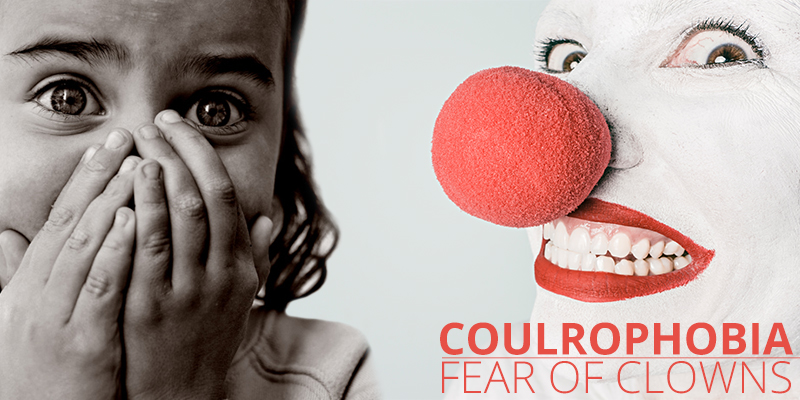Clowns may not be subject of laughter in actual. In fact, after the Pennywise the Clown from Stephen King’s “It” movie of 1990, even middle aged Americans were terrorized by the image of a clown. There’s a specific kind of phobia in which the person excessively and constantly fears clowns. This kind of phobia is known as coulrophobia.
Coulrophobia has been derived from Greek word “Kolon” which means stilt or stilt walker. These are commonly used by clowns. It is signified by a persistent worry of coming across a clown, and getting intensely disturbed upon any related encounter with clowns. This type of phobia is more common in children, but also occurs with adults.
What Causes Coulrophobia?
Coulrophobia can be caused by various factors:
Media Image
Coulrophobia has been often related with the media content that portrayed clowns as evil and dangerous creatures rather than comedy element. There are many horror movies like “It” by Stephen King or “Poltergeist” by Steven Spielberg which introduced heart wrecking clown characters. Such type of media image can have a long lasting fear, and that might turn out to be phobia in many people.
A traumatic encounter
Another notable cause for this kind of fear with clowns is associated with is a traumatic experience that is somewhere related with clowns. Mostly, children are more vulnerable to be traumatized by the appearance of a clown due to unfamiliar appearance. Any such distress and trauma might take a form of phobia in people unexpectedly.
The Symptoms of Coulrophobia
Common symptoms that can occur with people (both children and adults) having coulrophobia are:
- Intense and irrelevant fear of clowns and coming across one
- Fleeing away from a clown immediately even when it doesn’t pose any danger
- Instant reactions such as crying and screaming
- Avoiding amusement parks, parades and fetes to avoid clowns only
- Fear is triggered even by seeing accessory such as a hat or shows of a clown
- Realizing that the fear is irrational ( except in children)
- Panic attacks upon such fearful experience
- Physical symptoms such as trembling, trouble in breathing, increased heart rate, sweating and clammy hands, nausea or vomiting, dizziness or fainting, abdominal uneasiness and feeling hot
When to Visit a doctor?
Coulrophobia can be a problem if the person is constantly worried and having disturbing thoughts about clowns. If the above symptoms have been occurring for a long time period, exceeding over six months and disturbed the daily life of a person, one needs to visit a doctor.
How is Coulrophobia Treated?
Coulrophobia can be treated using various therapies and medicines. These are:
Exposure therapy with Relaxation methods
Exposure therapies are one of the effective treatment methods in phobias. The therapist prepares a setting with a fake clown, a toy clown or just accessories of a clown. The person is confronted with such settings, and made to react. Through regular exposures, the person is guided to resist this fear and build tolerance. The therapist also teaches various relaxation techniques such as mind visualization exercises, meditation and muscle releasing exercise to use simultaneously during exposures.
Cognitive Behavioral Therapy (CBT)
CBT is another effective psychotherapy to help with coulrophobia. The main goal of CBT is to modify the thoughts and behavior of a person into a positive one. The therapist conducts intensive counseling sessions where they interact about the phobia, how and why it was developed. Then, the person is guided through healthy discussions related with the fear and let out all the inner thoughts.
A CBT therapist may also use hypnotherapy to understand the hidden thoughts and images related with the fear.
Medicines
Commonly used medicines to treat coulrophobia are anti-anxiety and anti-depressant drugs. These should be taken strictly under prescription of a doctor.
